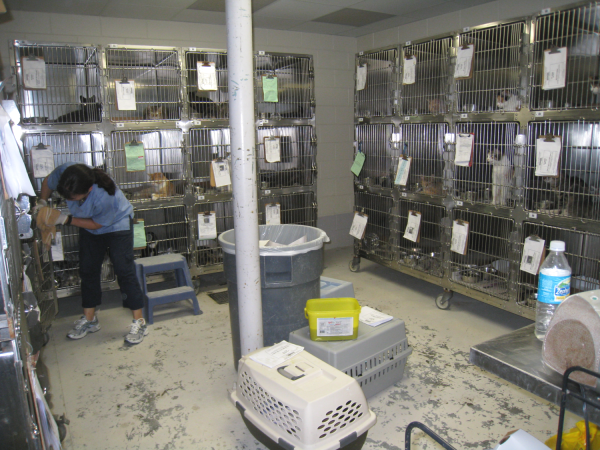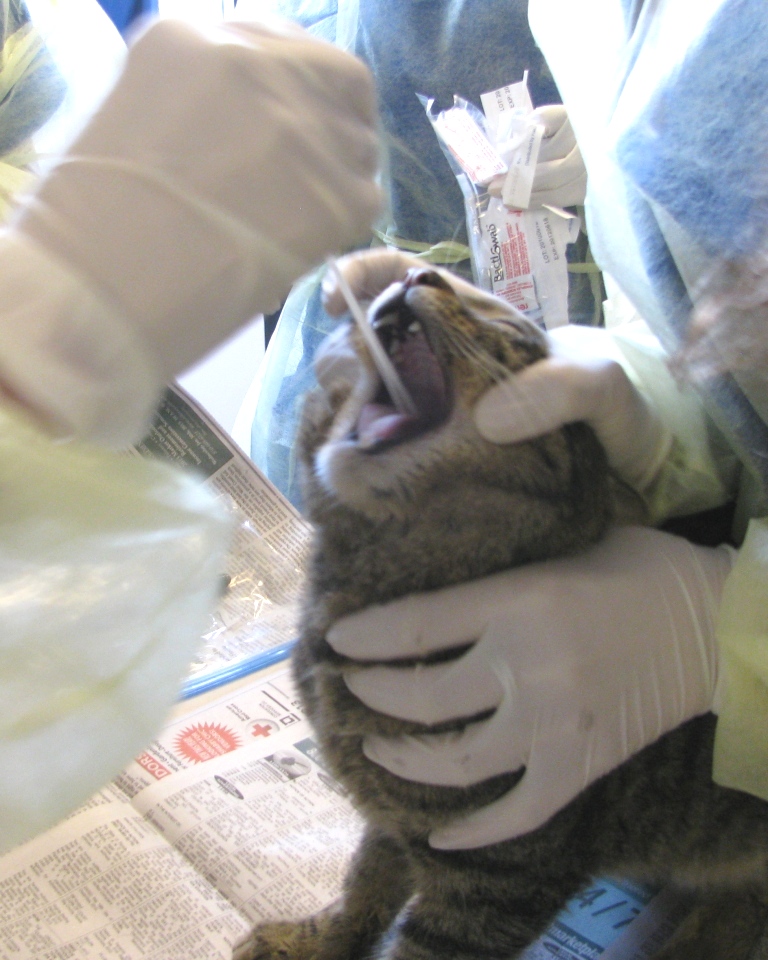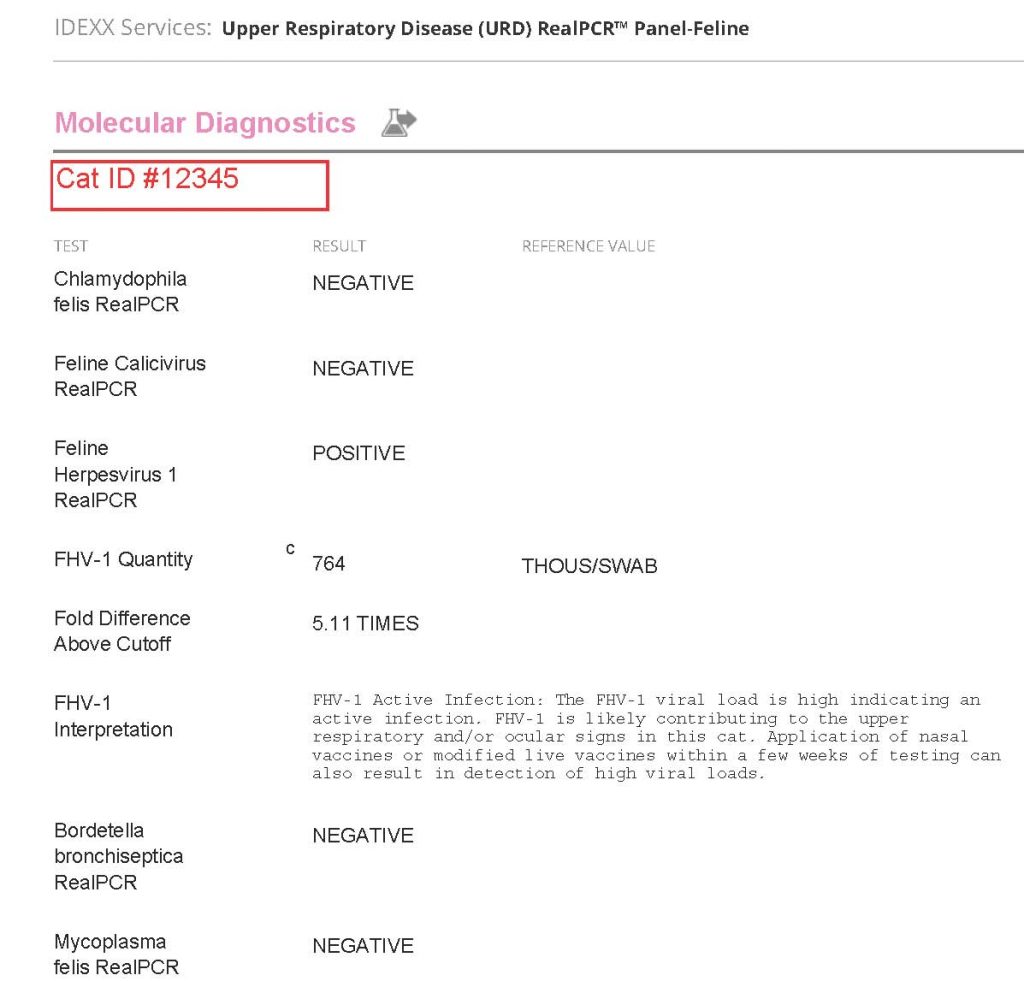Module 5: The Case of the Snotty Cats
Welcome to the Cat Ward
In the DuGood County municipal shelter, one staff member is assigned to clean and feed cats in the Cat Ward each morning before the shelter opens. She begins by observing each cat to see whether it ate the previous night or has signs of possible illness.
Today she observes several new cats that are sneezing and have nasal discharge. She reports her findings to the veterinary staff before she continues with cleaning of their cages.

Snotty, sneezing, sick cats seem to be everywhere at this shelter. The shelter veterinarian is concerned that, despite best efforts, there remains a high incidence (new cases) of feline upper respiratory infection (URI) in this shelter for the past six months. On any day, 25% of the shelter’s cat population is undergoing treatment for feline URI.
The shelter vet collected swabs from the caudal pharyngeal cavity of 10 sick cats to submit to a diagnostic lab for the Feline Upper Respiratory Infection (URI) PCR panel to diagnose the causes of the URI.

The test results confirmed the majority of these infections are due to feline herpesvirus.


